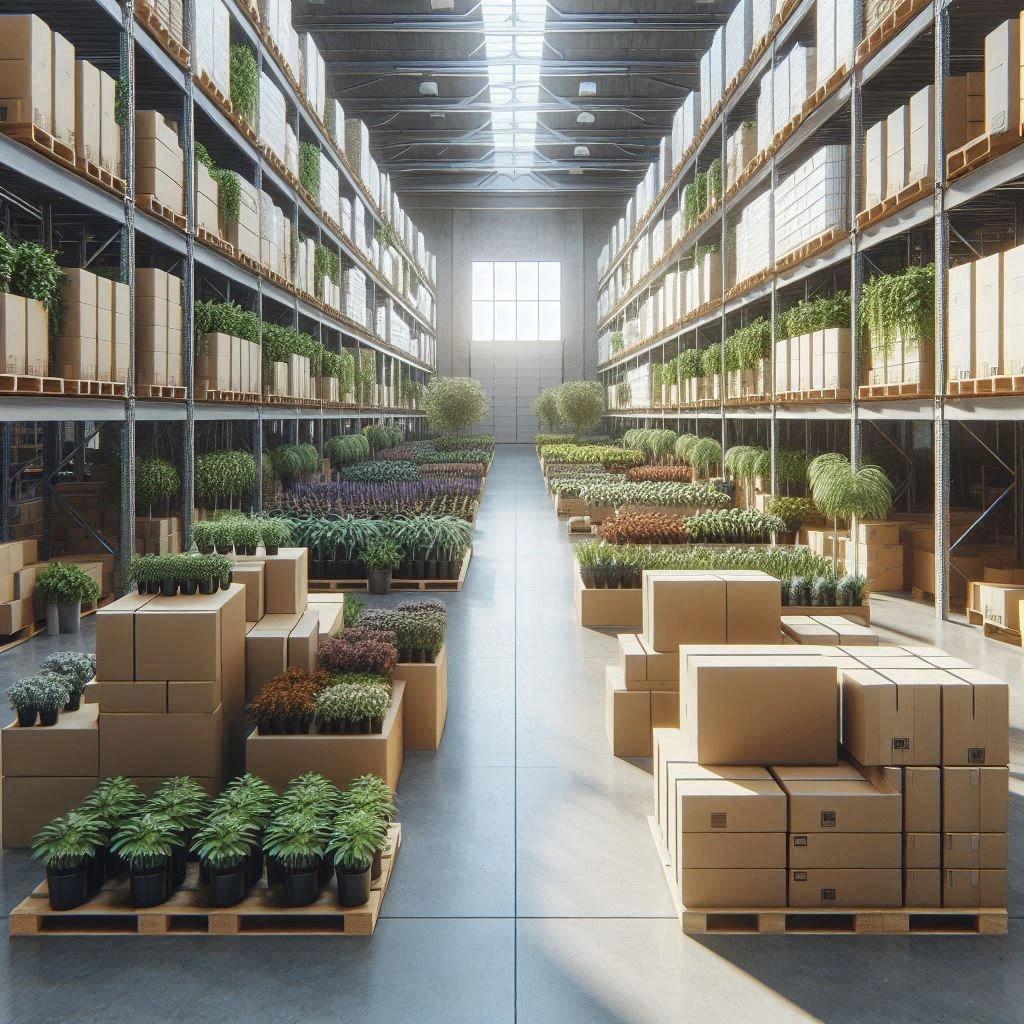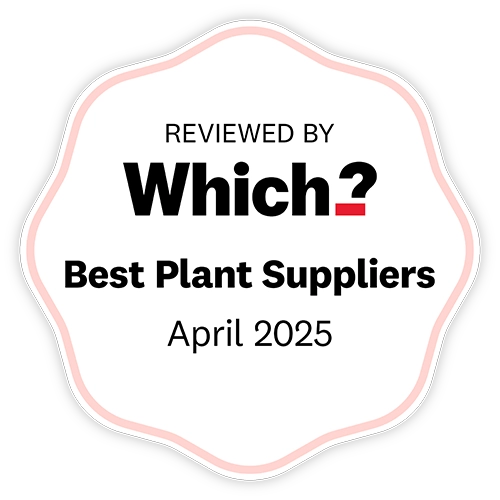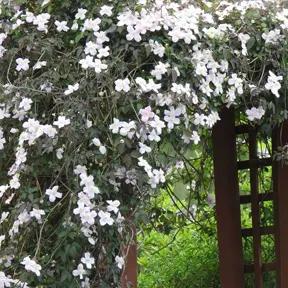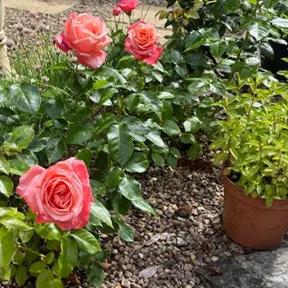Raspberry Cream Twirl Patio Climbing Roses
- Colour: Deep pink with pink-white stripes
- Flower Shape: Double, full
- Fragrance: Little to none
- Flower Period: Repeats in flushes June-November
- Leaves: Mid-green, glossy.
- Height x Spread: 2.4 x 1.8m
- Recommended for cutting
Description
Rosa Raspberry Cream Twirl - Climbing Roses. 4 Litre Pots.
Bi-colour rich pink and blush white flowers. They have little to no scent, which is a bit of a shame because they are practically thornless and are best admired close up, where their stripes are distinctly visible: a great choice for the cutting bed. To 2.4m.
Browse our Climbing Roses or all of our Rose Bushes.
Features:
- Colour: Deep pink with pink-white stripes
- Flower Shape: Double, full
- Fragrance: Little to none
- Flower Period: Repeats in flushes June-November
- Leaves: Mid-green, glossy.
- Height x Spread: 2.4 x 1.8m
- Recommended for cutting
Growing Raspberry Cream Twirl Roses
Good, well drained soil, close to full sun, and something to grow it up is all you need. Roses thrive on clay as long as it is not too waterlogged in winter.
Planting Instructions
How to Plant Climbing Roses
You can order bareroot roses for delivery from November to March. Containerised plants are available year round.
Soak your roses' roots or pots for a little while before planting. This is an opportunity to prune the stems down to six to ten inches, and inspect the roots to trim off damaged ones.
Choose a spot with reasonable light: semi-shade will do, but full shade will not. Prepare the soil by breaking it up with a fork while removing roots, stones, etc.
- On dry, sandy and chalky soil, dig a big hole, then backfill it with a soil mix improved with three quarters organic material, including compost and manure for fertility, and leafmould for water retention.
- On good garden soil, adding some organic material is beneficial, especially manure. Dig a shallow hole, deep enough to allow the graft/union to settle right at soil level, and wider than the roots.
- On really heavy clay, which rose roots love, you do not need to improve the soil by digging stuff into it; use organic material as a mulch on top of the soil afterwards.
Spread some Rootgrow mycorrhizal fungi around the bottom of the hole, where it will make contact with the roots.
Arrange a mound on the floor of the hole to set your rose's roots on, so they spread out, and the graft-union is slightly above soil level. Backfill the hole with the planting mix, firming it down as you go, at first with your hand to fix the rose in place, and then with your heel to firm it. Dust some bonemeal on the surface and water in thoroughly. In the process, the soil will settle down so that the graft is clear of the soil.
How to prepare and plant a bareroot climbing rose video.
Mulch well in spring, and keep well watered during dry periods for the first year. Deadhead repeating roses to encourage continuous flowering.
Newly planted roses shouldn't need much rose food, maybe a dash on poor dry soils. When they are settled in the second year onwards, feed them during the growing season with homemade compost teas and foraged sea weed, or some of our Biofertiliser rose food.
Mature shrub roses need gentle pruning compared to floribundas and hybrid teas. Prune to tidy the shape in winter. First remove the usual dead, diseased and badly positioned wood, ideally cutting out whole shoots back to a main stem, or outward facing bud. Then remove the wispiest stems, and some of the oldest wood from the centre.
Did You Know?
Bred in 2010 by Alain Meilland. It won Gold at the 2013 Gold Standard Rose Trials, and First Prize at the 2012 Hradec Králové Rose Trials. It is also sold as Colibri Farbfestival, and Ines Sastre, after the actress (a household name in Spain, you may have seen her as Haydee in the Gérard Depardieu version of The Count of Monte Cristo).
The seed parent was Deborah (a floribunda) and the pollen parent was Sorbet Fruité crossed with Bonica.
Registration code MEIteratol.
It's Summer Planting Season 2025

Pot Grown & Plug Plants Delivered

Direct from the Nursery Value

No more broken plants in the post!








